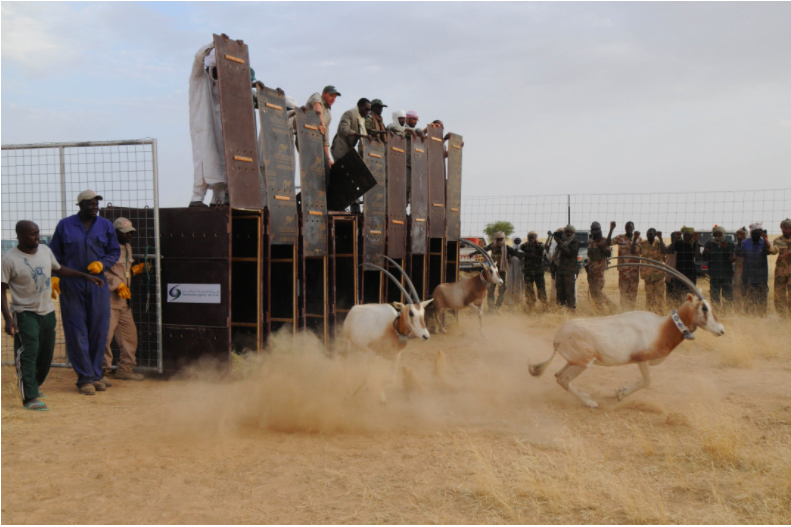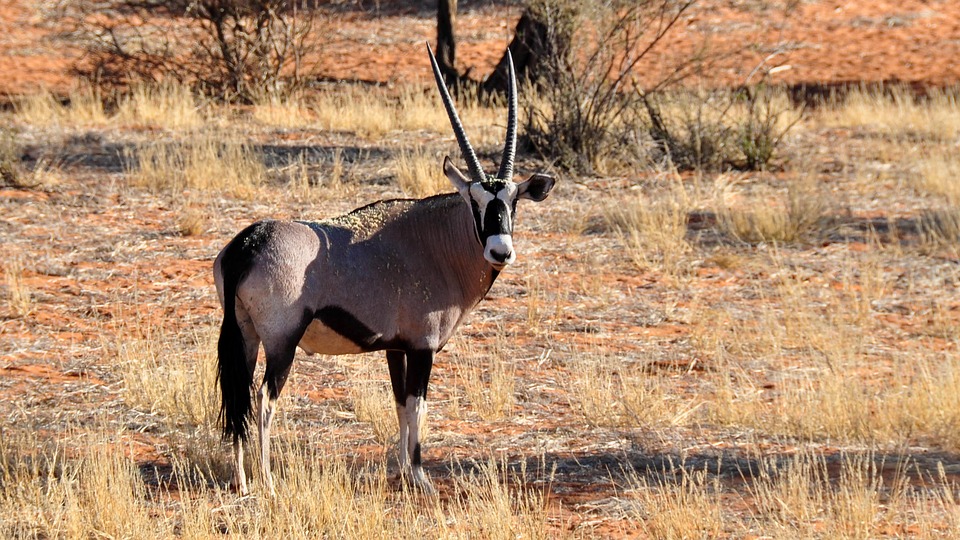“Group of ‘extinct’ antelope released into wild in southern Sahara;” “Abu Dhabi releases 54 scimitar-horned oryx in Chad;” “Scimitar-horned oryx calves born in wild.” The story of the Scimitar-horned oryx is well-documented in natural science articles targeted for both scholarly and general readers, and for good reason: it is dramatic and inspiring. Since year 2000 when they were officially labelled extinct in the wild, this iconic creature has started to come back from the brink thanks to a concerted effort from many conservation organizations. However, many outside of the conservation community do not even know what an oryx is, let alone the struggle of the scimitar-horned oryx and the rising pressures which contribute to their decline.
Let’s start with why the scimitar horned oryx is important. This antelope-esque desert dweller is extremely specialized for arid environments; its unique physiology allows it to go potentially months without water and it can withstand temperatures up to 116˚F without needing to sweat. Its native range used to stretch across north Africa, and massive herds of oryx could be seen migrating in search of vegetation other grazers can’t reach. So, in many regions they were the primary prey species for large African predators (including humans).
Overhunting has been the primary driver of their extinction, particularly during the many wars in the 20th century as occupying forces used them as easy sources of sustenance. Desertification and agricultural use of former habitat space have also limited the range of the oryx over the same period. The Smithsonian Conservation Biology Institute, in conjunction with the Zoological Society of London and Abu Dhabi’s Environment Agency, have been trying to reintroduce them in Chad for the past 5 years. Captive breeding and research programs began in 2013, and the first 25 oryx were released in Chad in 2016.

First group of reintroduced Oryx being released in Chad in May, 2016. Conservation workers and scientists watch as GPS-collared Oryx race to freedom. Image taken from Sahara Conservation Fund website.
Today, there are over 90 free-ranging oryx in Chad with about 18 calves born in the wild without veterinary care. While the population is steadily growing and appears to be healthy, the researchers keep their hopes tempered. They are still a long way from the project’s overall goal of having 500 oryx within a stable wild population and are working hard to make this a reality. Issues currently being researched include finding cheaper and more reliable ways to tranquilize oryx and attach GPS collars to new-born individuals. To this end, the Smithsonian Conservation Biology Institute has reached out to JMU to get students involved in finding solutions. Researchers believe that drone technology could be utilized to replace the need for helicopters in the field when researchers need to sedate the oryx.
Our solution has potential to be just the fix the Scimitar-horned Oryx Reintroduction Programme needs, and you can read all about it here!

